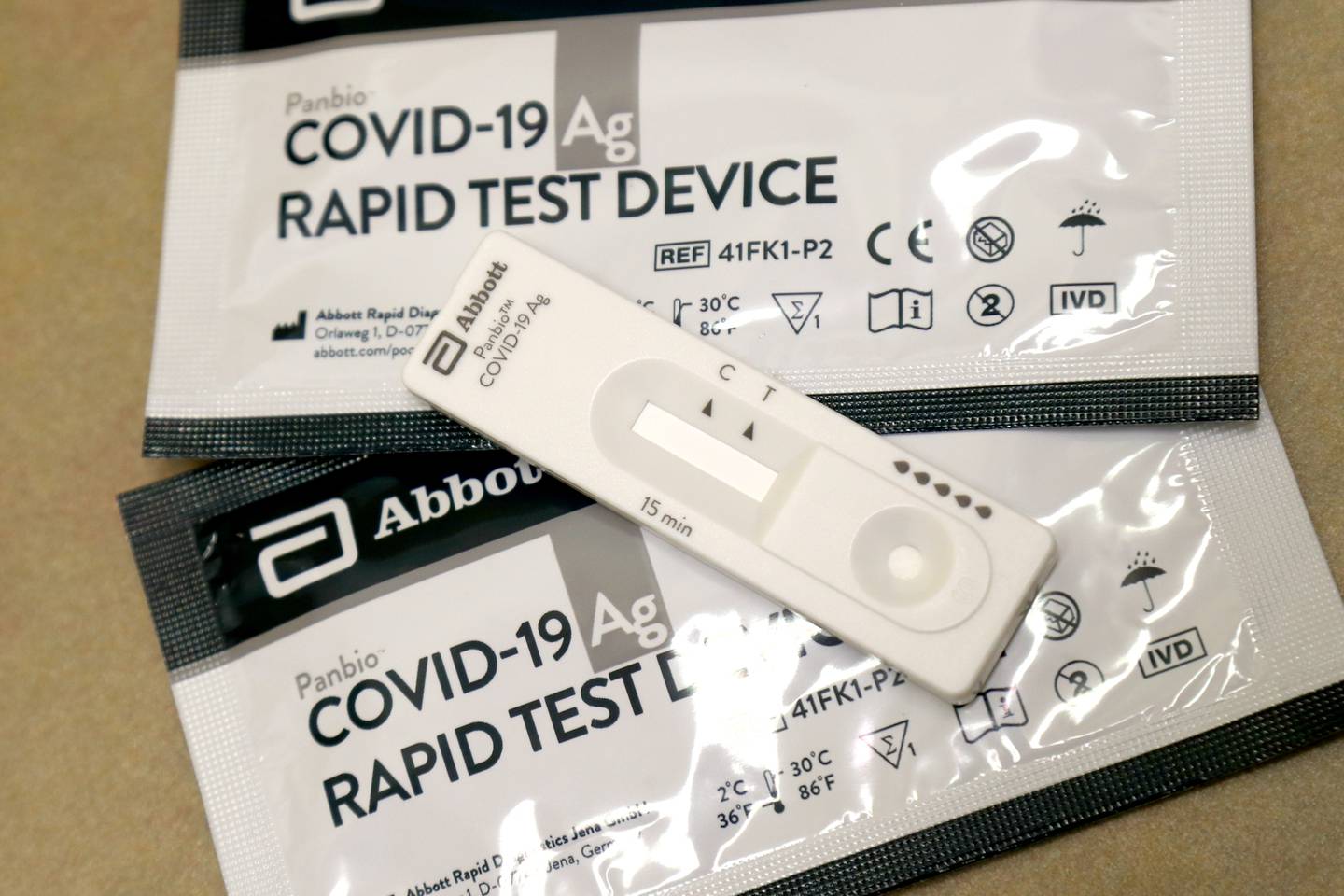One Covid symptom could be warning you that you're infected with the virus before a positive rapid antigen test.
As Omicron surges around the world, experts are warning of the new Covid symptoms that could mean you have caught the milder strain.
More than 20 symptoms have been identified by those exposed to Omicron, which means it can be a little confusing to know when to get a test, The Sun reports.
But experts are suggesting that one symptom in particular could warn you that you've caught the virus before a positive Covid test.
The Commissioner of the Chicago Department of Public Health, Dr Allison Arwady, said a sore throat was the most common symptom for predicting a positive Covid test, suggesting you should stay home if you have one.
As reported by NBC Chicago, she said: "Even if it's a sore throat, no matter what it is. I've told my own staff this, it's what I do myself … if you are sick, even a little bit sick, stay home.
"More true than ever right now because sick, even a little bit sick, until proven otherwise with a test — that's Covid. That's how we treat it, that's how you should treat it."
The most commonly felt symptoms of Covid are a runny nose, headache, fatigue, altered smell and a low appetite.
An earache has been noted as a regular symptom for people who test positive for the variant – especially by those who have been vaccinated.
Unusual joint pains have also been added to the list of common symptoms, but fewer cases report feeling run down and a loss of smell.
The UK Office for National Statistics also revealed the top three symptoms they have seen reported: a cough, fatigue and headache.
These vary from the three main symptoms of coronavirus set, which have not changed since Covid first surged in March 2020: a persistent cough, a loss of taste and smell and a high temperature.
The top 20 Covid symptoms are:
- Runny nose
- Headache
- Fatigue
- Sore throat
- Sneezing
- Persistent cough
- Hoarse voice
- Unusual joint pains
- Chills or shivers
- Fever
- Dizzy
- Eye soreness
- Brain fog
- Unusual muscle pains
- Altered smell
- Skipped meals
- Swollen glands
- Chest pain
- Earache
A string of hugely positive studies shows that Omicron is milder than other strains in vaccinated people.
The first official UK report also revealed that the risk of hospitalisation is 50 to 70 per cent lower than with the Delta variant.
However, a new sister subtype of the Covid Omicron variant, which may be more transmissible and harder to track, has begun rearing its head overseas in recent days.
The subtype is being referred to as BA. 2, while the original Omicron, currently sweeping through Australia, is known by scientists as BA. 1.
While cases of the BA. 2 type of Omicron remain low across various European countries, it could be just a matter of time before it arrives in Australia.
First off – what is BA.2?
BA.2 is a sister lineage to BA.1. Currently both lineages are defined as the Omicron variant.
Scientists are still working to determine whether the subtype, which had infected 53 people in the UK up to January 10, is more severe than the original BA. 1 type.
While the Health Security Agency has designated BA. 2 as a variant under investigation, its UK incident director Dr Meera Chand said such subtypes were to be expected.
"It is the nature of viruses to evolve and mutate, so it's to be expected that we will continue to see new variants emerge," she said, according to Metro.

Rapid Test Device for Covid-19. RATs test kit. Photo / Bevan Conley
There had been early indications the BA. 2 type may be more transmissible than BA. 1, however in Denmark, where it accounts for about half of Omicron cases, no stark differences in hospitalisations have yet been noted.
Denmark's Statens Serum Institute said it was likely vaccines had an effect against severe BA. 2 infections, which had several differences to BA.1.
One difference was that BA. 2 had shown positive for the S-gene, while BA. 1 did not.
The lack of S-gene in BA. 1 was a key component in tracking Omicron's early spread, as it was a feature that distinguished it from Delta.
The same feature however may be what makes BA. 2 infections harder to track.
Take your Radio, Podcasts and Music with you









